Jaguar’s new F-Type harks back to the brand’s racing heyday

Some cars have greatness thrust upon them, while others are born into it. The Jaguar F-Type is probably in the latter camp, having existed in the feverish imagination of car enthusiasts ever since its true predecessor, the legendary E-Type, ceased production in 1974. Since then, there have of course been many sporting Jaguars - some of which have been undeniably great. But for whatever reason, the company was never quite comfortable with creating a true successor. Instead, Jaguar happily preferring to go down the road of building beautiful crafted, elegant saloons and grand tourers.
Although Jaguar’s domination of sports car racing back in the 1950s (with a brief resurgence in the nineties) is unlikely to be kickstarted any time soon, the idea that racing improves the breed appeals to engineers and customers alike. As a result, the mythos of the E-Type – and the D- and C-Types before it – have always held sway over Jaguar. It’s taken fresh investment from new owners Tata and the evolution of a sophisticated global market to make the F-Type viable, and even then the company fully expects it to lead through image, rather than sales.
Such is the popularity of Jaguar’s newest machine that it’s taken us several months to track one down. In the flesh, the F-Type's convertible iteration doesn’t disappoint. Although it’s not exactly small, Jaguar design director Ian Callum and his team have shaped a car that fills out its footprint, its perfect proportions giving just the right impression of compact, wieldy potential.
The cockpit is snug without feeling cramped, and the roof stows swiftly and neatly to form a shape that emphasises the car’s shapely flanks and neat rear lights. Spark up the V6 – here supercharged and delivering 380 horsepower – and you’re struck by the immediacy of the noise; this car makes an instant play for the emotions. Unlike it’s larger XK sibling, the F-Type isn’t really a long distance cruiser. At speed, there’s a fair bit of road noise and the ride is easily upset by pock-marked roads.
Instead, the F-Type is about desire, naked desire. It feels ‘on’ all the time, unlike near rivals like the Porsche 911, which have evolved into meek, almost characterless machines in comparison. The F-Type has a ferocity and richness that’s rarely found in cars these days, most of which prefer one over the other and can’t seem to find the right combination of both. A true heir to the original? Possibly, given the constraints of the modern motor industry. But perhaps it’s also a strong symbol of the company’s future intentions as it forges ahead with cars that speak directly to the heart and the mind.
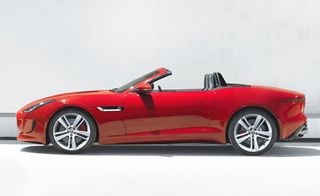
Although it’s not exactly small, Jaguar has shaped a car that fills out its footprint, its perfect proportions giving just the right impression of compact, wieldy potential
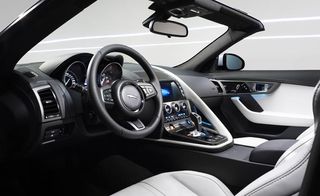
Inside, the sleekly designed cockpit is snug without feeling cramped
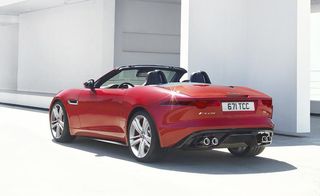
The roof stows swiftly and neatly to form a shape that emphasises the car’s shapely flanks and neat rear lights
Wallpaper* Newsletter
Receive our daily digest of inspiration, escapism and design stories from around the world direct to your inbox
Jonathan Bell has written for Wallpaper* magazine since 1999, covering everything from architecture and transport design to books, tech and graphic design. He is now the magazine’s Transport and Technology Editor. Jonathan has written and edited 15 books, including Concept Car Design, 21st Century House, and The New Modern House. He is also the host of Wallpaper’s first podcast.
-
 A new limited-edition Rhodes piano and Gibson doubleneck guitar aim for the stars
A new limited-edition Rhodes piano and Gibson doubleneck guitar aim for the starsThe new Rhodes Mk8 Earth Edition piano and Gibson Jimmy Page EDS-1275 Doubleneck guitar revisit classic instruments at a price
By Jonathan Bell Published
-
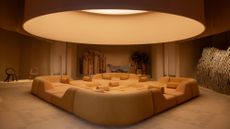 The new interior design trends we spotted at Salone del Mobile 2024
The new interior design trends we spotted at Salone del Mobile 2024These are the interior design trends to look out for in 2024 and beyond, from soft upholstery to conversation pits and low dining
By Rosa Bertoli Published
-
 Tiffany & Co nods to its theatrical history with a surreal new campaign
Tiffany & Co nods to its theatrical history with a surreal new campaignTiffany & Co campaign ‘With Love, Since 1837’ sees Dan Tobin Smith and set designer Rachel Thomas create an offbeat set
By Hannah Silver Published
-
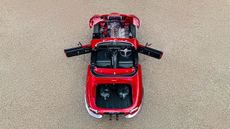 Helm’s meticulously re-imagined Jaguar E-Type features a finely crafted interior by Bill Amberg
Helm’s meticulously re-imagined Jaguar E-Type features a finely crafted interior by Bill AmbergHelm transforms the legendary E-Type into a thoroughly modern machine, upgrading every aspect of Jaguar’s pioneering sports car to an exacting brief
By Jonathan Bell Published
-
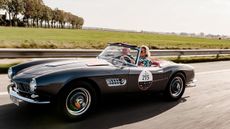 Zoute Grand Prix is a car fest like no other at a pristine Belgian beachside town
Zoute Grand Prix is a car fest like no other at a pristine Belgian beachside townAmy Serafin takes to the well-heeled streets of Knokke-Heist to experience the Zoute Grand Prix, its annual cavalcade of classic car-related events, from a rally to an auction
By Amy Serafin Published
-
 Jaguar F-Type 75 special edition is the last of its kind as the marque hints at a radical future
Jaguar F-Type 75 special edition is the last of its kind as the marque hints at a radical futureThe Jaguar F-Type 75 will be the last ever V8-powered Jaguar; is it also the end of conventional sports cars for this legendary British marque?
By Jonathan Bell Published
-
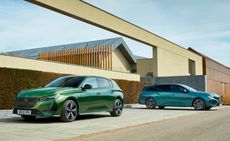 Peugeot’s sparky 308 gets hybrid power and handsome lines
Peugeot’s sparky 308 gets hybrid power and handsome linesThe Peugeot 308 proves that mass-market design needn’t be dull, blending hybrid power with sharp lines and excellent detailing
By Jonathan Bell Published
-
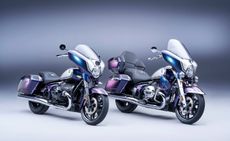 BMW Motorrad brings out the big guns for its newest cruisers
BMW Motorrad brings out the big guns for its newest cruisersBMW Motorrad R 18 Bagger and Transcontinental set the tone for high-voltage cruising with a brand collaboration with speaker specialist Marshall
By George Chapman Last updated
-
 Dacia’s new Manifesto concept is a true outdoor utility vehicle
Dacia’s new Manifesto concept is a true outdoor utility vehicleUtilitarian auto brand Dacia sets a bold new agenda with its Manifesto, a concept car pitched at the active outdoor market
By Jonathan Bell Last updated
-
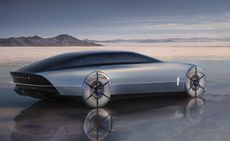 The sun sets on traditional supercars at California’s Monterey Car Week
The sun sets on traditional supercars at California’s Monterey Car WeekMonterey Car Week, the world’s most prestigious car gathering, is showcasing ever-more extravagant special editions, coachbuilt cars and all-new electric concepts. Here are seven key machines from 2022
By Rory FH Smith Last updated
-
 Is McLaren’s GT a sports car, a tourer, or the best of both?
Is McLaren’s GT a sports car, a tourer, or the best of both?The McLaren GT is a capable all-rounder dressed up in svelte supercar clothes. It might also be the last of its type
By Jonathan Bell Last updated